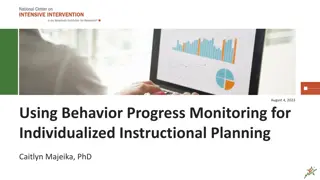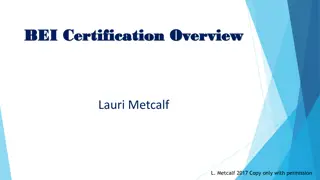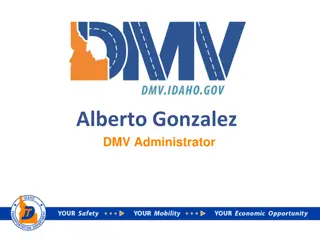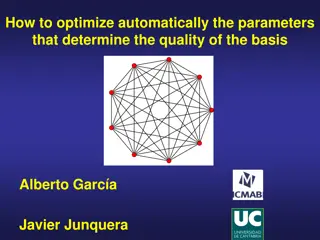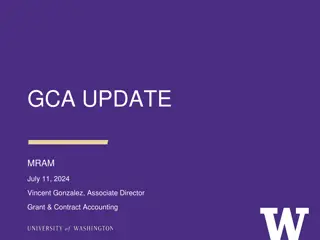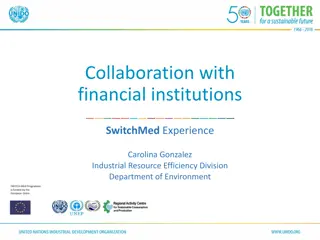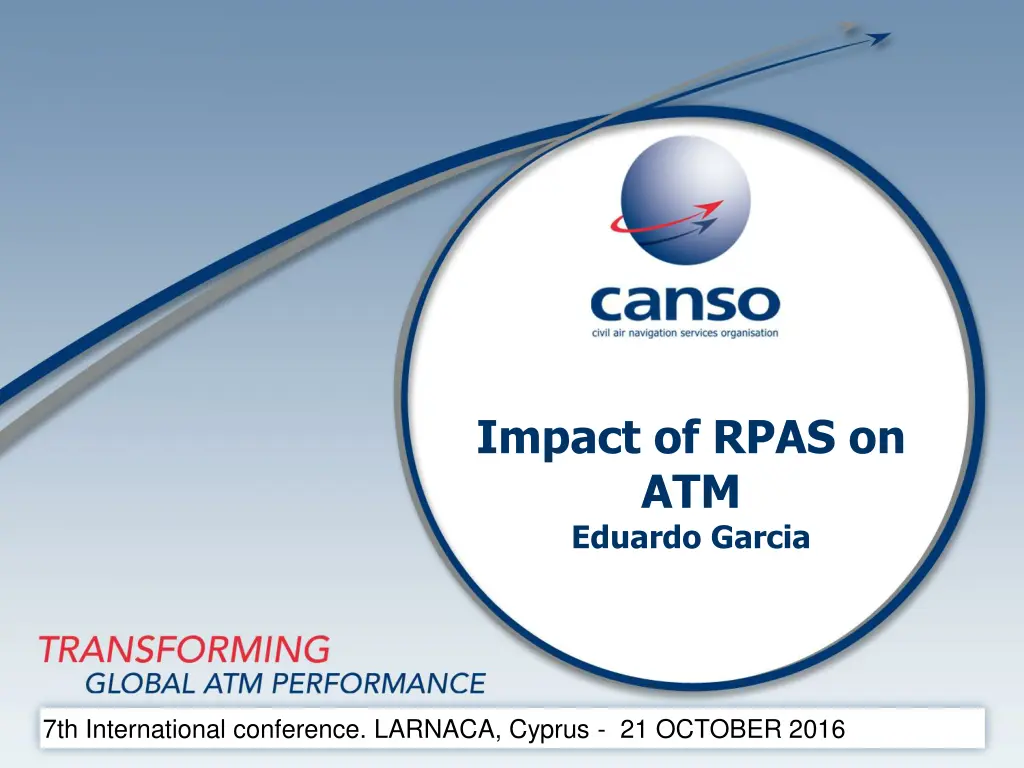
Integration of RPAS into Global Air Traffic Management
Learn about the impact of Remotely Piloted Aircraft Systems (RPAS) on Air Traffic Management (ATM), as discussed at the 7th International Conference in Larnaca, Cyprus. Explore how CANSO is leading efforts to integrate RPAS safely into non-segregated airspace, addressing safety and efficiency concerns. Discover the rising presence of RPAS in various industries and the objectives of integrating RPAS into current and evolving ATM systems.
Download Presentation

Please find below an Image/Link to download the presentation.
The content on the website is provided AS IS for your information and personal use only. It may not be sold, licensed, or shared on other websites without obtaining consent from the author. If you encounter any issues during the download, it is possible that the publisher has removed the file from their server.
You are allowed to download the files provided on this website for personal or commercial use, subject to the condition that they are used lawfully. All files are the property of their respective owners.
The content on the website is provided AS IS for your information and personal use only. It may not be sold, licensed, or shared on other websites without obtaining consent from the author.
E N D
Presentation Transcript
Impact of RPAS on ATM Eduardo Garcia 7th International conference. LARNACA, Cyprus - 21 OCTOBER 2016
About CANSO Vision: to be the recognised leader in transforming global air traffic management (ATM) performance Mission: as the global voice of ATM, represents the views of ANSPs and creates value for its Members and stakeholders Delivers policy and standards of best practice through committees work programmes: Safety, Operations, and Policy CANSO Members support over 85% of world air traffic 88 Full Members; 79 Associate Members
CANSO Global Presence HQ - Amsterdam Montreal Brussels Singapore Mexico City Amman Johannesburg
General Comments CANSO is committed to the development of seamless, safe, and efficient airspace and is dedicated to ensuring ANSPs are equipped with the tools to safely and seamlessly integrate RPAS into global ATM From the perspective of an ANSP, integrating RPAS into non-segregated airspace is of special interest. CANSO is leading the way towards a safe integration of RPAS in the global airspace by focusing on training materials and standardising contingency/emergency procedures.
The rise of RPAS/Drones RPAS/Drones are becoming an increasingly common sight in our skies RPAS/Drones have the potential to open up all sorts of new opportunities and applications, from: Emergency and life-saving applications; Aerial surveillance and mapping; And retail deliveries like Amazon In addition, RPAS are an emerging market that is creating jobs and growth Autonomous capabilities are growing in other industries rapidly ! Automotive Railways AI / robotics Ships Internet of things
Our Objective Integration of RPAS into current and evolving ATM systems Addressing insertion of emerging technologies Key factors - Ensuring safety Maintaining efficiency RPAS (regardless of size) operating within controlled airspace should comply with existing equipage requirements, procedures, and regulations unless operating with a waiver or exemption Work closely with RPAS stakeholders on integration issues
Challenges 1. RPAS are unique and varied aircraft. 2. ANSPs confirm that small RPAS operations are already impacting the safety and efficiency of ATM operations 3. One of the most unique challenges that ANSPs face today is bridging the gap between ATM and non-traditional users. 4. Inability to comply with many standard and routine ATM procedures (including contingency operations and emergency management) 5. Aerodrome surface movement 6. Lack of standardised procedures and means to mitigate hazards associated with lost link and flyaway situations 7. Insufficient application of existing safety management and safety risk management policy 8. Lack of standard phraseology and terminology 9. Inconsistent implementation, globally, on RPAS integration particularly small, low-level
Actions - What is CANSO doing? Representing CANSO ICAO RPAS Panel SARPS development JARUS Industry Stakeholder Consultation Board Still kicking the tires (Next meeting in Madrid/April) SESAR 2020 RPAS Definition Phase ICAO sUAS Advisory Group CANSO is leading efforts to be progressive in emergency management of RPAS Finalising RPAS position paper regarding ANSP concerns about the proliferation of small UAS Developing training materials for ANSP's on general RPAS operations Updating CANSO ANSP Considerations for RPAS Operations Publication Providing inputs to EASA (e.g. Prototype Rule, etc)
Role of ANSPs in the future UAS Traffic Management OPS Concept for the integration of very low level (VLL) operations for UAS has to be developed and validated ANSPs have to be involved actively in the process of the Unmanned Aircraft System (UAS) Traffic Management (UTM) development to ensure: Safe and fair integration for all airspace users. Appropriate safety at "boundaries , especially in the integration of VLL flying UAS in the vicinity of aerodromes. Interoperability between the UTM and ATM systems ANSPs should be involved in the implementation and development for new SMS requirements due to the UTM 11
Conclusions RPAS are a game changer and an exciting opportunity to change the way people, businesses and State organisations do things CANSO is putting a lot of resources and effort into the RPAS area Safety, Safety, Safety
Questions & Answers www.canso.org




